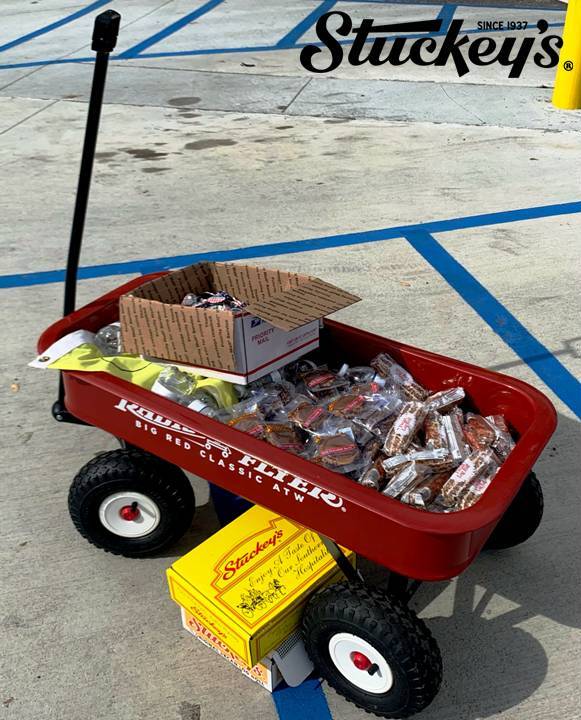
Long before you learned to drive – heck, even before you learned to ride a bike – chances are that your first mode of transportation was a little red wagon called the Radio Flyer. You pulled your toys around in it. You gave the neighborhood kids (and sometimes your pets) a ride in it. Your mom and dad probably even pulled you around in it once in awhile, too.
If that sounds like you, you weren’t alone. The fun and versatile Radio Flyer has been the favorite toy of generations of boys and girls since it was first introduced by a young Italian immigrant back in 1927. So beloved was the Radio Flyer, in fact, that it was one of the first inductees into the National Toy Hall of Fame in 1999. Ah, but we’re getting a little ahead of ourselves. Join us now as we take a look at the America’s favorite little red wagon – the Radio Flyer.
How the Radio Flyer Came to Be
In 1914, sixteen-year-old Antonio Pasin from Venice, Italy, found himself working in Chicago, Illinois. At first, the young Italian immigrant worked a variety of odd jobs here and there. By 1917, however, Antonio had saved up enough money to buy his own cabinet making shop in Chicago’s West Side.
By 1923, business had become so good that he formed the Liberty Coaster Company. Soon, the demand for wagons – dubbed “Liberty Coasters” – exceeded the supply. As a result, in 1927, Alberto began making wagons out of stamped steal using mass manufacturing assembly line techniques like that of the automobile industry – something that would earn him the nickname “Little Ford”.
Antonio would once rename the company three years later in 1930, now calling it the Radio Steel and Manufacturing. He also changed the name of his wagons to Radio Flyer as an homage to the inventor of the radio (and fellow Italian) Guglielmo Marconi and pioneering American pilot, Charles Lindbergh.
The Radio Flyer Over the Years
The Radio Flyer was produced in variety of styles and designs with their names usually being inspired by automobiles and popular culture at the time. For example, in the 1930s, Antonio paid his respects to the Lincoln Zephyr – a luxury line of automobiles made by Ford – by producing a wagon known as the “Zephyr”.
Besides red, wagons of yellow and blue were introduced in the 1950s both inspired by Disney – the yellow wagon was inspired by the Disney film Davy Crockett, King of the Wild Frontier and Uncle Walt’s Mickey Mouse Club inspired the blue wagon. Evel Knievel was the inspiration behind the Fireball 2000 in the 1970s and SUVs the inspiration for the “Quad Shock Wagon” of the 1990s.
Still Flying High Today
Antonio would change the name of the company once again in 1987, this time simply calling it Radio Flyer. He passed away on July 5, 1990 and was posthumously inducted into the Toy Industry Hall of Fame in 2003.
Today, Antonio’s grandson, Robert Pasin, has been at the helm of Radio Flyer since 1997, making Radio Flyer a third generation family owned and operated small business (much like Stuckey’s). Radio Flyer still makes their famous wagons along with a wide range of other products including scooters, tricycles, ride-ons, horses, battery ops, and wagons. Since 2002, the company has been producing both plastic and metal-bodied wagons.
And with today being Christmas, Radio Flyers still look great under the tree.
Whether your next road trip is by car or by rail, it’s not really a road trip without taking Stuckey’s along. From our world famous Stuckey’s Pecan Log Rolls to our mouthwatering Hunkey Dorey, Stuckey’s has all the road trips snacks you’ll need to get you where you’re going.
For all of the pecany good treats and cool merch you’ll need for your next big road adventure, browse our online store now!
Stuckey’s – We’re Making Road Trips Fun Again!
